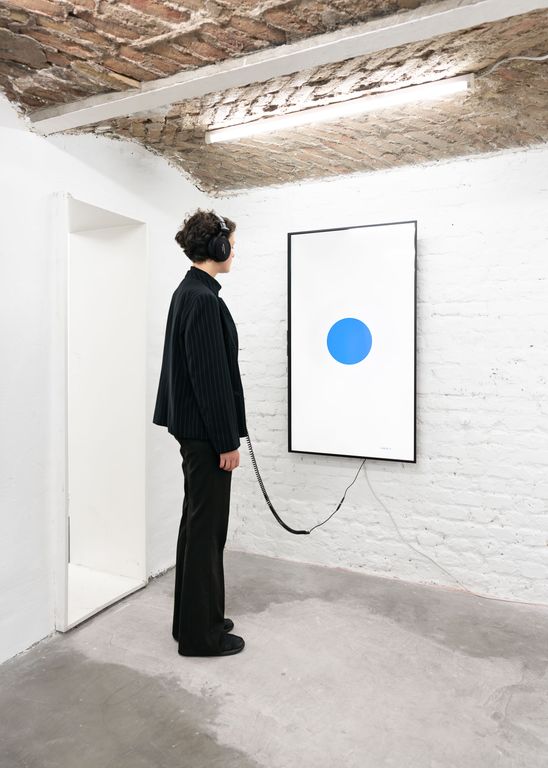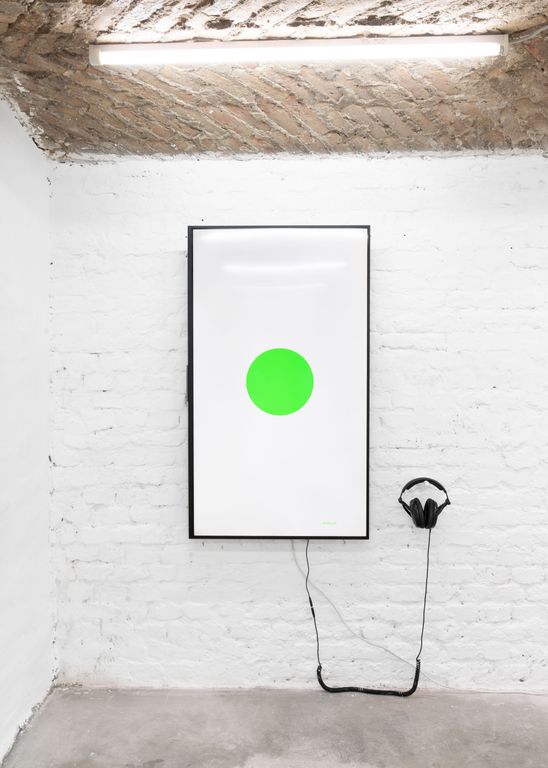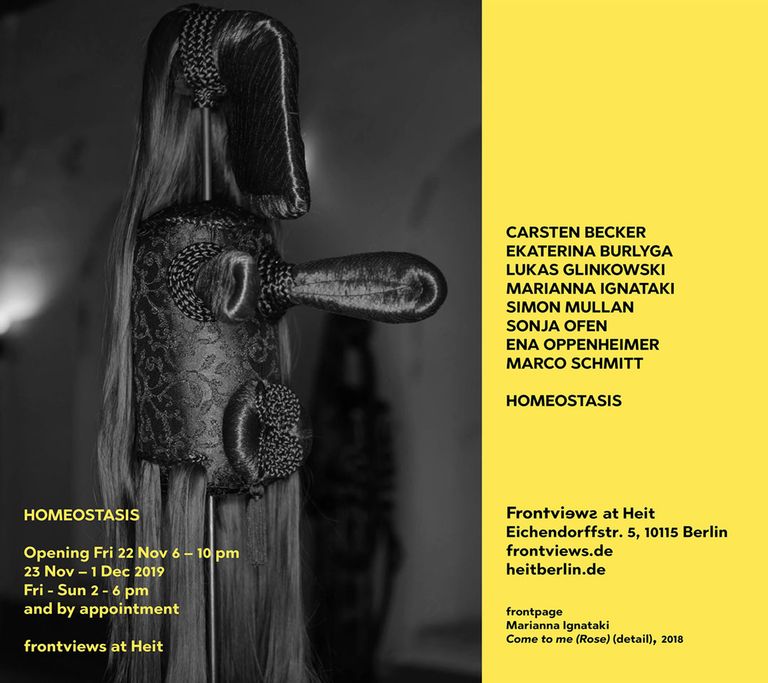Homeostasis




Exhibited Works
About the Exhibition
The first room in the foundation of a Berlin Altbau – a sparkling psychedelic funk jungle: a jaguar and a police dog guard a self-distilled treasure, the working pulse of a big-city cowboy pulsates, a waterfall gets rid of coded messages and a piece of black tiled wall makes urban disinfection possible, at least on one surface. The second room leads into darkness: the wanderers encounter obscure mask heads made of brunette, synthetic hair braids; German soldiers grooming wet horse manes and amorphous volumes on light canvases, which shift from a very deep anthracite to a brilliant white.
It is clear that rather sub-rational spaces are opened here. Once detached from logic and direct translatability, associations, memories and dream sequences come to the fore, which has always been the main territory of art. The exhibition addresses inscriptions into the bodies and beings of people, which they may not be fully aware of, but which create resonance within them with the right perceptive trigger. According to genealogy, for example, the experiences of our ancestors inscribe themselves into our stem cells over at least four generations.
Neuronal homeostasis - the balancing of tension in the individual body - the nerve cells send their electrical impulses through the neuronal network at a restricted voltage level. If this voltage level is undercut or exceeded throughout the body, the organism fails. Therefore, internal regulations exist in the cells to maintain this voltage level in the body. This inherent effort is called neuronal homeostasis.
Socio-cultural homeostasis - the collective tension discharges in society - the bodies are connected through exchange and build up collective tension surpluses through social conditioning. These surges are discharged into various actions - be it the manifold activities in the everyday life of the individual or great social upheavals that affect many. For this flow of collective charges, the subjective "homeostasis experiences an expansion into the socio-cultural sphere. Examples of these new means of regulation are judicial systems, economic and political organizations, the arts, medicine, and technology"1. Paradoxically, socio-cultural homeostasis not only guarantees the stability of social systems, but also their constant transformation, which is why Niklas Luhmann, Francisco Varela and other sociologists have argued for replacing homeostasis with the concept of homeodynamics.
Especially in the basement of this city, people consciously or subconsciously search for a little balance, the constraints of the translucent upper world are devotedly channeled in the underground clubs, hobby cellars, workshops, gyms, devotional rooms, weapon storage spaces, wellness catacombs and the studios for music, tattoo, massage and physical love. Through the tension surpluses of our social constraints, libertarian activities and obscure rituals have thus emerged, and under the sediments of thoroughly rationalized system execution, somnambulistic landscapes have been able to flourish.
Homeostasis takes up pictorial works that absorb these subterranean and partly subversive currents of our community and reflect them in content and aesthetics. The works form, as it were, a creative meta-level that maps the profound groundings of collective homeodynamics in the community of this city.
Stephan Klee
Footnotes
-
Antonio Damasio: Self comes to mind. Constructing the Conscious Brain, NY 2010, S. 38f ↩
Announcement

